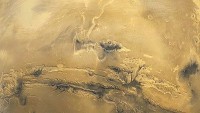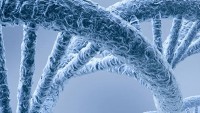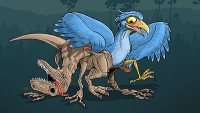The way in which a cow turns sunshine, water and grass into milk defies evolutionary explanations. …read more Read more here: creation.com
In 1994 the prestigious journal Science shocked the scientific world by publishing sequence data from DNA retrieved from dinosaur bone said to be 80 million years old. DNA is a fragile molecule, and so it breaks down quickly. Measurements of DNA stability suggest it could last thousands of years, at best, under the likely conditions. But 80 million years was just too incredible for other skeptical scientists. Eventually, these skeptics were vindicated—as it became apparent that the original researchers had sequenced contaminating human DNA, not dinosaur DNA. However, in 2012 a different group of researchers published new results supporting the [More]
By Bill Hoesch Secluded in the canyon country of southern Utah is a beautiful but often overlooked state park called Kodachrome Basin. …read more Read more here: AIG Daily
Did you know that animals have genetic switches? These are regulatory regions of DNA that control the genes. Scientists have noticed that dramatic things can happen when a genetic switch is mutated. For instance, a mutated genetic switch can dramatically alter the appearance of stickleback fish, or generate a great variety of coat colours in animals. Veterinary researcher Dr Jean Lightner has suggested that God may have created genetic switches to facilitate variation, the switches having been created with a propensity to mutate without negatively affecting other traits. Modifications to genetic switches are not examples of ‘evolution in action’, even [More]
What does a cow have in common with a compass needle? The answer is that both of them ‘know’ the orientation of the earth’s magnetic field. No, this isn’t crackpot science. In 2008, the prestigious journal, the Proceedings of the National Academy of Sciences USA, published research documenting how cows grazing in a field have a tendency to align themselves with the earth’s magnetic field. And this phenomenon isn’t just limited to cows; many animals including deer, birds, turtles, bats, and even some bacteria, can sense the earth’s magnetic field for alignment or navigation. The fact that so many living [More]
By Larry L. Zimmerman If there is “something there” in mathematics, the Christian cannot escape the consequences of the universal quantifiers which saturate Colossians 1:15–20. …read more Read more here: AIG Daily
We are commonly told that similarities between living things prove that they are related by evolution, but did you know that many similarities found in nature defy evolution? Take for example the marsupial mouse and the placental mouse. These creatures are remarkably similar, but according to evolutionists they did not inherit this startling similarity from a common ancestor. Instead, we are told, ‘evolution’ achieved the same design in both creatures, independently. They call this ‘convergence’ because evolution has supposedly converged on, or arrived at, a similar looking outcome. But ‘convergence’ is really just a word used to try to explain [More]
By Dr. Danny Faulkner While water is a common substance in the universe, the earth is the only place that we know for certain where liquid water exists. …read more Read more here: AIG Daily
A point-by-point response to the BBC’s recent propaganda piece on The Big Questions: Evolution …read more Read more here: creation.com
Camels can tolerate up to 30% loss of bodyweight by dehydration-twice that which would kill most other mammals. …read more Read more here: creation.com
Questionable assumptions about how volcanic andesite lava is produced suggests caution before accepting uniformitarian interpretations. …read more Read more here: creation.com
The creation of original, distinct creature kinds confronts the evolutionary teaching that animals can endlessly morph from one form to another. Recent news reports reveal two clear illustrations of sea creatures living and reproducing according to their kind right from the start. More… …read more Read more here: icr.org
Bodies bounce while jogging or performing any number of other vigorous activities, usually without getting dizzy. However, bodies get dizzy when they are “bounced” from the outside, like while on a boat or airplane. What’s the difference? Researchers pinpointed amazing new details behind the mechanism that maintains balance during voluntary motion, but their notion of its origins clearly misses the mark. More… …read more Read more here: icr.org
By Dr. Nathaniel T. Jeanson New data agree with the expectations from D-loop results, further confirming the origin of humans within 6000 years and rejecting evolutionary timescales. …read more Read more here: AIG Daily
By Dr. Elizabeth Mitchell The ocelloid—a camera-like “eye” inside single-celled marine plankton—is an amazing design, but it does not represent an evolutionary triumph. …read more Read more here: AIG Daily
By Ken Ham Shoulder blade shapes have been compared between humans and existing apes as well as fossilized apes. Well, evolutionists wouldn’t call the fossils apes. An article stated that a recent study suggests that the last common ancestor (often shortened to LCA) of humans and apes “looked a lot like a chimpanzee or gorilla . . . at least in the shoulder.” The PNAS study, titled “Fossil hominin shoulders support an African ape-like last common ancestor of humans and chimpanzees,” explains, A laterally facing shoulder blade allows humans to store energy in their shoulders, much like a slingshot, facilitating [More]
By Dr. Elizabeth Mitchell Zhenyuanlong is not a blow to biblical belief or proof that dinosaurs evolved into birds, but a testimony to avian diversity of the pre-Flood world. …read more Read more here: AIG Daily
Fossil leaves show that leaf miners have existed along with leaves and questions the long ages attributed to these fossils. …read more Read more here: creation.com
How James Hutton introduced deep time, and created the greatest error in geology today. …read more Read more here: creation.com
By Ken Ham A recent article in the Sunday Times claims that “of all the scientific fields, evolution probably carries the most common misconceptions.” It then goes on to describe 10 alleged misconceptions of evolutionary ideas. Many of these misconceptions are topics we’ve already pointed out and covered on our website. As Christians we need to be careful not to misrepresent what evolutionists believe, so we encourage Christians to avoid certain arguments. But some of the alleged misconceptions about evolution that made the Sunday Times list are actually not misconceptions at all! The article begins with a common argument that [More]
Homo naledi is another case of selective interpretation of the evidence to ‘prove’ evolution of man from apelike ancestors. …read more Read more here: creation.com
Explained by biblical history. …read more Read more here: creation.com
Engineers look to copy the hummingbird’s aerodynamic secrets in their designs for miniature flying robots …read more Read more here: creation.com
Even children learn that plants and animals depend on one another. Plants release oxygen for animals to breathe, and plants make food—mostly sugar—for animals to eat. In turn, animals produce carbon dioxide so plants can grow using sunlight. This ecological interdependence shows enough divine design to inspire any honest thinker to consider a Creator, but a recently discovered interaction between pitcher plants and bats shows even more. More… …read more Read more here: icr.org
How did our solar system get here? Those who dismiss any possibility of creation imagine ways that pure natural forces might set in motion the sun, each unique planet and their moons. New computer modeling results seem to show promise—but only when they overlook or assume obvious and important factors. More… …read more Read more here: icr.org
By Ken Ham Do you realize that Homo means different things to different scientists? When an evolutionist classifies a fossil as Homo, he does not mean the same thing a Bible-believing scientist does. There has already been a lot of buzz on evolutionists’ websites and blogs mocking our assessment that the published evidence does not support a Homo designation for Homo naledi. Ignoring how much evolutionary scientists disagree among themselves, some make much of disagreement among creationists about Homo naledi‘s identity. One in particular, in “Bones of Contention: How Will Creationists Respond To A Huge New Hominid Fossil Find?,”predicted responses [More]
Despite what evolutionists say, mutations are not evidence for evolution but rather evidence against it. …read more Read more here: creation.com













































